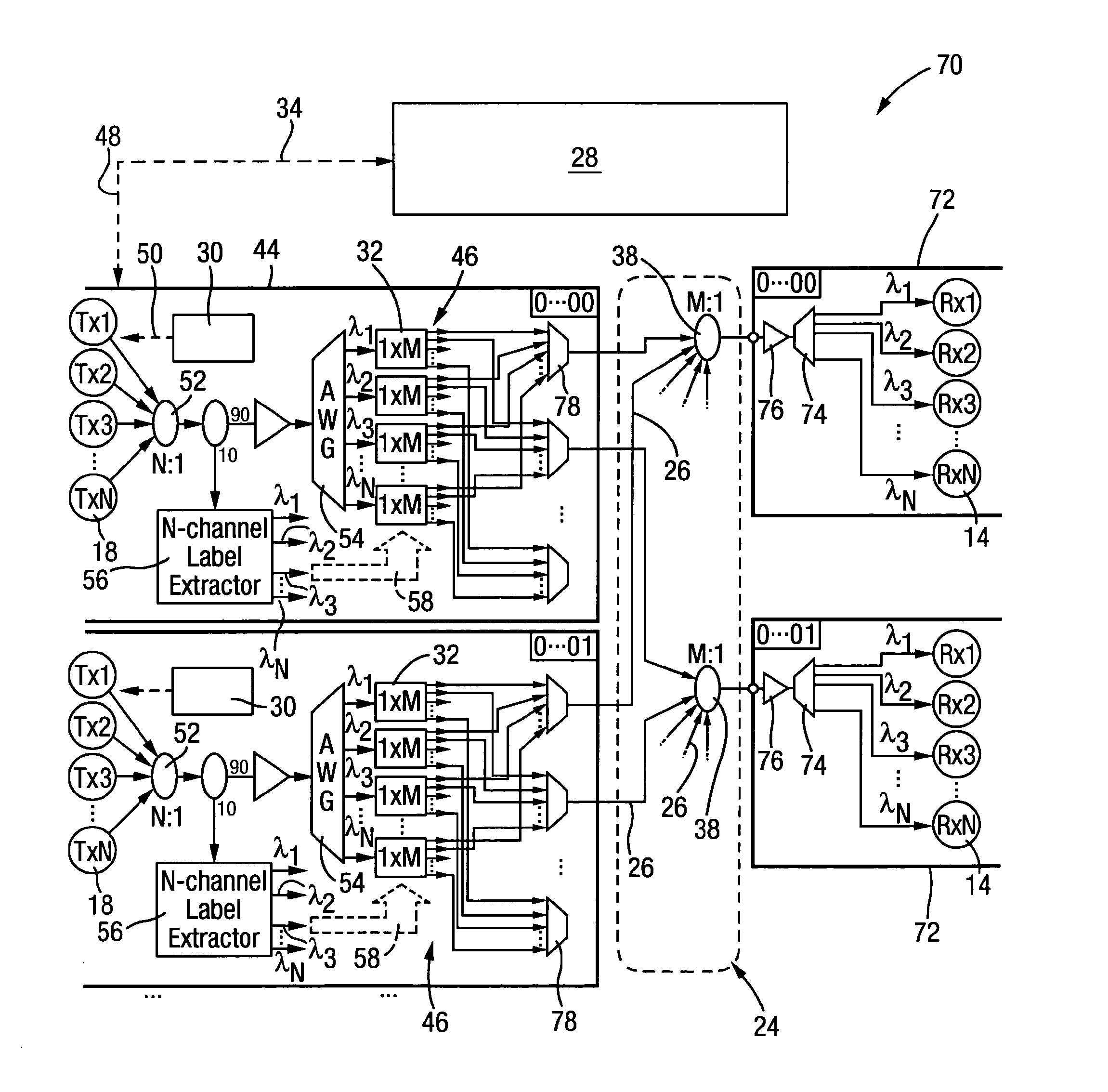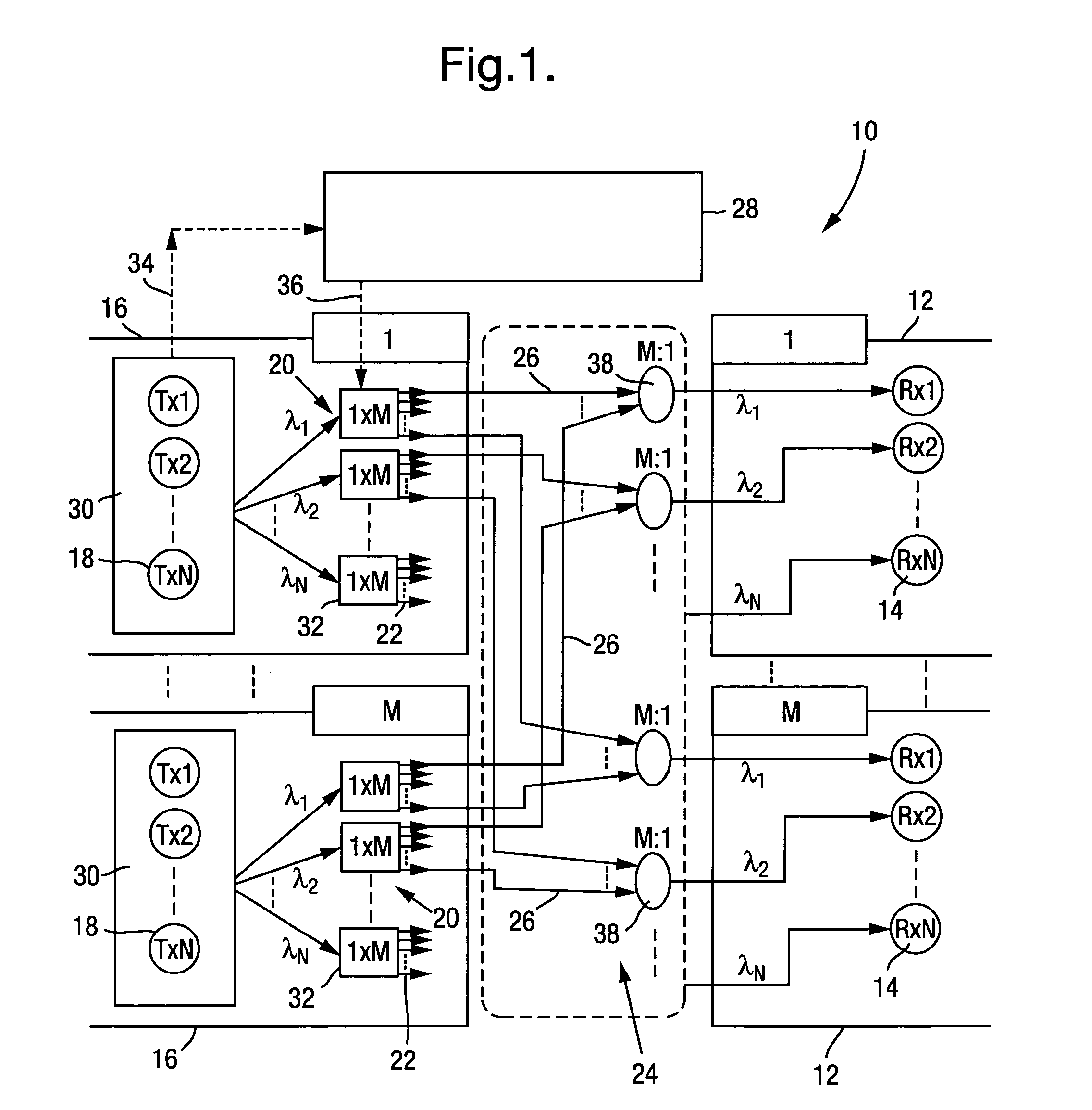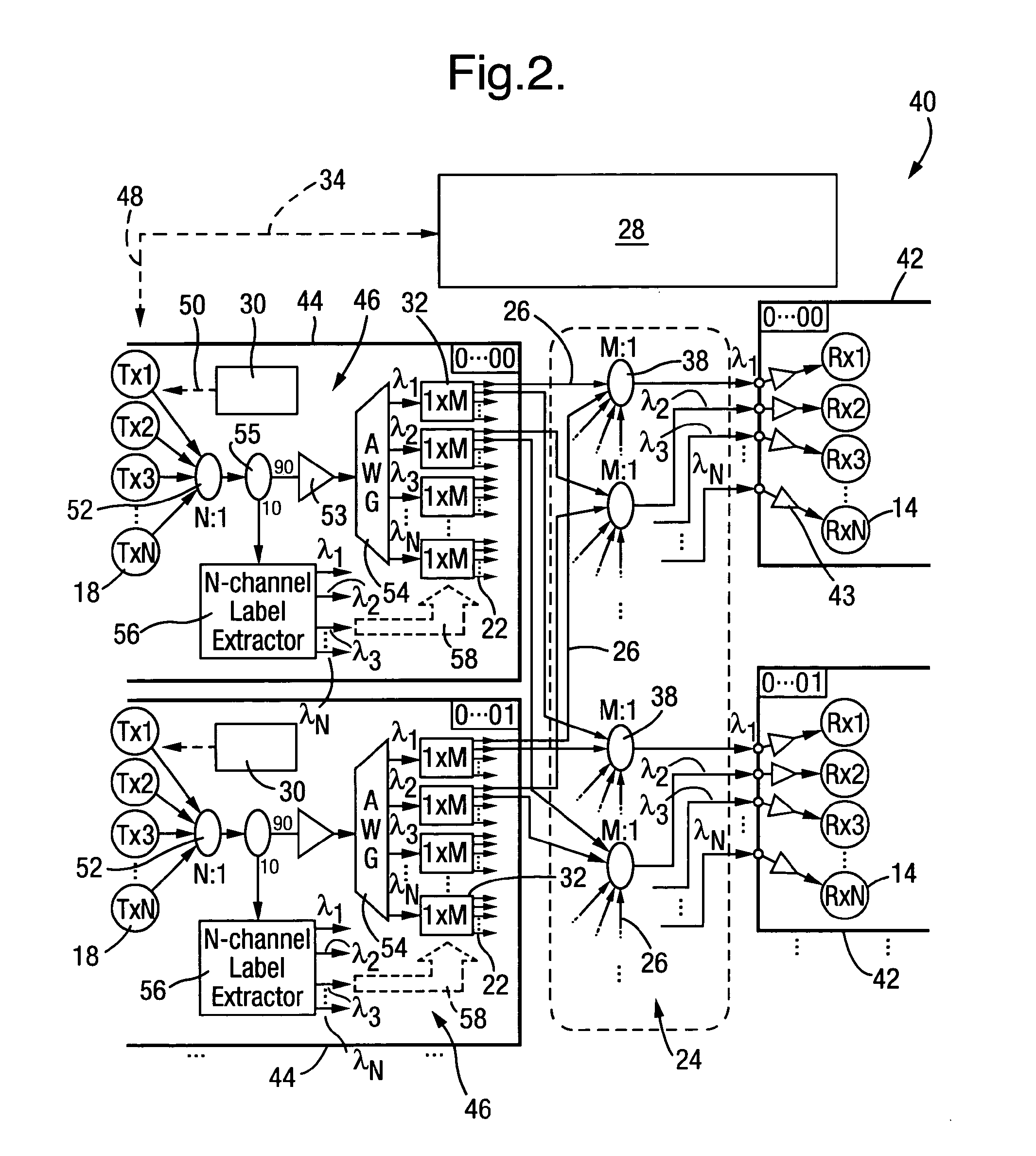Synchronous packet switches
packet switch technology, applied in hybrid switching systems, wavelength-division multiplex systems, electrical apparatus, etc., can solve the problems of increasing the footprint of the router, the overall power required by the router, and the power density of the entire router, so as to achieve the footprint and electrical power consumption requirements of a synchronous packet switch
- Summary
- Abstract
- Description
- Claims
- Application Information
AI Technical Summary
Benefits of technology
Problems solved by technology
Method used
Image
Examples
first embodiment
[0067]Referring to FIG. 1, the invention provides a synchronous packet switch 10 comprising M output modules 12 (only two are shown for clarity), M input modules 16 (only two are shown for clarity), optical connections 26, 38 and a switch control unit 28. The switch 10 is arranged to switch data in the optical domain and is arranged to receive electrical signals carrying data cells to be routed and to transmit further electrical signals carrying data cells having been switched. The synchronous packet switch 10 is operable to route fixed length packets of cells at each packet time.
[0068]Each output module 12 comprises N optical receivers 14, which in this example comprise fixed wavelength photo detectors. Each optical receiver 14 is configured to receive optical signals at a different 1 of N wavelengths (λ1-λN).
[0069]Each input module 16 terminates N input channels, each delivering electrical signals carrying data cells to be routed by the switch 10. Each input module 16 comprises N ...
third embodiment
[0086]the invention provides a synchronous packet switch 60, as shown in FIG. 3. The synchronous packet switch 60 of this embodiment is substantially the same as the synchronous packet switch 40 of the previous embodiment, with the following modifications. The same reference numbers are retained for corresponding features.
[0087]In this example the optical connections comprise solely of optical fibres 26, simplifying the optical backplane 24. The couplers 38 of the previous embodiments are replaced by N M×1 optical switches 64 in each output module 62. The M inputs of each optical switch 64 are coupled via the optical fibres 26 to the respective output ports 22 of the optical switches 32 in the input modules 44. Each optical switch 64 only receives optical signals at one of the N wavelengths (λ1 to λN) and the output of each optical switch 64 is connected to the respective one of the optical receivers 14 configured to receive that wavelength. The switch control unit 28 is further ope...
fourth embodiment
[0088]the invention provides a synchronous packet switch 70 as shown in FIG. 4. The synchronous packet switch 70 of this embodiment is substantially the same as the synchronous packet switch 40 shown in FIG. 2, with the following modifications. The same reference numerals are retained for corresponding features.
[0089]In this embodiment the routing apparatus 46 further comprises M output multiplexers, in the form of AWGs 78. Each AWG has N input ports, each for receiving an optical signal at a different one of the N wavelengths. Each input port of an AWG 78 is coupled to an output port of one of the optical switches at the respective wavelength. Each AWG 78 is arranged to multiplex received optical signals for routing to a selected output module 72.
[0090]In this example, the optical connections comprise optical fibres 26 and M M:1 optical couplers 38, provided in the optical back plane 24. The number of optical fibre 26 and M:1 couplers 38 is thus reduced compared to the switch 40 of...
PUM
 Login to view more
Login to view more Abstract
Description
Claims
Application Information
 Login to view more
Login to view more - R&D Engineer
- R&D Manager
- IP Professional
- Industry Leading Data Capabilities
- Powerful AI technology
- Patent DNA Extraction
Browse by: Latest US Patents, China's latest patents, Technical Efficacy Thesaurus, Application Domain, Technology Topic.
© 2024 PatSnap. All rights reserved.Legal|Privacy policy|Modern Slavery Act Transparency Statement|Sitemap



